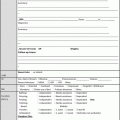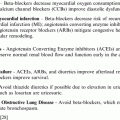© Springer International Publishing Switzerland 2016
Pamela A. Fenstemacher and Peter Winn (eds.)Post-Acute and Long-Term MedicineCurrent Clinical Practice10.1007/978-3-319-16979-8_3PACE
(1)
Physician Hospital Organization, TriHealth, 4750 Wesley Avenue, Cincinnati, OH 45206, USA
Keywords
Program of All-Inclusive Care of the Elderly (PACE)PACE model practicePACE Day Health Center (DHC)PACE Interdisciplinary Team (IDT)Introduction
Effective and value-based healthcare for older people is becoming increasingly important as the number of older adults who require high-quality long-term care for chronic illness continues to increase. How can healthcare providers best serve the needs of those who are both frail and elderly? Models of care must incorporate cost containment without compromising participants’ quality of care or quality of life. Though frail elders say they want to remain at home in their community, frequently, complex medical conditions and lack of financial and community resources may make nursing home placement the only option [1].
PACE is a unique health care delivery system that strives to successfully integrate a full spectrum of services for frail persons 55 years of age and older. PACE organizations deliver a combination of primary, specialist, acute, long-term and home-based care as well as palliative care to its enrollees. Use of interdisciplinary team care, managed care services, and care coordination result in improved health outcomes and reduced expense over time.
The average PACE enrollee is 80 years old, has an average of eight acute and chronic medical conditions and three limitations in activities of daily living (ADLs). Over 90 % of PACE participants continue to live in the community [2]. Comparing this to the data for older adults living in assisted living facilities, who require assistance with two or more ADLs and average three chronic medical conditions, the PACE member population is more frail.
PACE History
PACE originated in 1971 in San Francisco’s Chinatown, with a $2,000 federal grant to the Chinatown-North Beach Health Care Planning and Development Corporation (later renamed On Lok Senior Health Services ). Marie-Louise Ansak , a Swiss social worker, developed a long-term care model for an elderly Chinese population that considered nursing home placement culturally unacceptable. Ansak developed the concept for the original PACE site out of the British Day Hospital’s model which offered therapeutic and minor medical services, with patients returning home at the end of the day. The American version, “On Lok” (Cantonese for peaceful abode) expanded these provisions, thereby creating a global approach to managing patient cases, which included offering housing, a full range of medical and social services, and therapies.
On Lok continued to succeed and grow in the 1970s, and by the 1980s On Loc had received waivers from Medicare and Medicaid to pilot a new financing system that allowed the PACE programs to provide full medical services for a fixed monthly payment for each enrollee in the program [3]. In 1986, federal legislation allowed for other PACE sites and in 1997, PACE received permanent Medicare and Medicaid provider status under the Balanced Budget Act . Alexian Brothers Community Services in St. Louis became the first PACE site to become a permanently recognized part of the Medicare and Medicaid programs. When the Federal Interim Regulation for PACE was published in 1999 there were 30 programs in 19 states. PACE organizations became subject to both Federal and State regulation and surveys in a manner similar to those of long-term care facilities.
PACE expansion to rural markets was initiated by a 2005 Deficit Reduction Act with $7.5 million in funding. There are currently over 100 PACE programs in 31 states with more than 31,500 enrollees.
The National PACE Association (NPA) was founded in 1994 to support PACE programs. NPA provides education resources, communication forums, and collects benchmarking data to compare participant characteristics and service delivery across sites. NPA works closely with members of Congress, senior administration officials, and state policy makers to educate and to promote a reimbursement and regulatory environment that enables PACE programs to provide high-quality, individualized, and innovative care. The NPA Primary Care Committee develops resources to assist PACE clinicians, serves as a clinical resource to the NPA Board of Directors and promotes PACE to the wider medical community.
Financing
PACE offers an innovative financing model that integrates capitated Medicare and Medicaid dollars per enrollee. Once enrolled, PACE becomes the participant’s sole source of Medicare- and Medicaid-covered services, including coverage of medications. Most PACE participants are dually eligible, i.e., have both Medicare and Medicaid, but do have the option to pay privately if they do not. Medicare rates are calculated for each participant using a risk-adjusted payment methodology similar to Medicare Advantage plans. Medicaid rates are negotiated between each PACE organization and the state agency administering the Medicaid program. PACE organizations assume all financial risk for delivering all healthcare services that would normally be covered under Medicare Parts A, B, D and Medicaid. PACE programs are considered Medicare Advantage Programs , and are funded under Medicare Part C. PACE is in a unique position as both payor and provider of services that allows for payment flexibility, creativity, and innovation.
Outcomes
Although there are limited outcome studies on PACE, the results are generally positive: PACE has been shown to improve functional status and quality of life, and decrease mortality [4–6]. Findings also suggest that the very old (80–90 years), those living alone, using ambulation aids, cognitively impaired, and requiring assistance to perform instrumental activities of daily living (IADLs) benefit the most from a non-institutional long-term care approach such as PACE [7].
Rates of hospitalization, readmission and potentially avoidable hospitalization (PAH) are lower for PACE enrollees than for comparable Medicaid nursing home residents [6, 8– 11]. The variation in study results across PACE sites reflects their heterogeneity in case mix, longevity and experience of the interdisciplinary team (IDT) . The programs availability of transitional housing, contracts and agreements with local hospitals and skilled nursing facilities, as well as the local medical culture also caused the programs results to vary [6, 11].
A Day at the PACE Day Health Center (DHC)
The IDT
Primary care physician
Registered nurse
Master’s-level social worker
Physical therapist
Occupational therapist
Recreational therapist or activities coordinator
Dietician
PACE site manager
Home care coordinator
Personal care attendant or his or her representative
Driver or his or her representative
Case Scenario
Like other PACE enrollees, Anna enjoys attending the DHC an average of three times a week. Her home health aide (HHA) arrives at Anna’s home early to prepare Anna for the day. Anna’s daughter welcomes the aide into their small apartment. Anna depends on PACE HHAs for her daily personal care since a stroke left her wheelchair bound. Bathed and dressed, Anna waits in the living room for the PACE driver to pick her up for the trip to the DHC. Meanwhile in the kitchen, her daughter shares a list of concerns with the aide, which include financial and medical, as well as equipment and supply issues for her mother. The aide assures her daughter that everything will be addressed at the IDT meeting later in the morning. Her driver arrives to transport Anna to the DHC. A PACE driver for many years, he is very familiar with all the people on his route and Anna greets him like an old friend.
Stay updated, free articles. Join our Telegram channel

Full access? Get Clinical Tree





